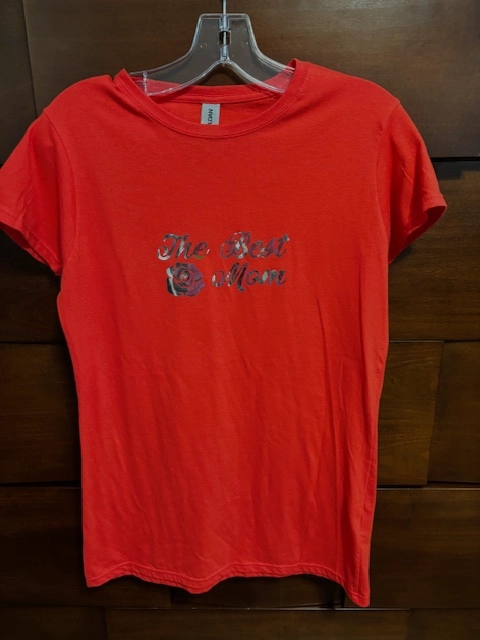The Art of Customized Embroidery: Opening the Keys to Creating One-of-a-kind and Unforgettable Designs
The secrets to developing customized needlework layouts that captivate the eye and leave a long-term perception lie in a delicate equilibrium of strategy, imagination, and attention to information. As we dive into the globe of personalized embroidery, we discover the nuanced interplay between string choice, stitch intricacy, and design personalization that elevates a mere garment to a job of art.
Choosing the Right Needlework Threads
When picking needlework strings, what vital variables should you take into consideration to make sure the very best results for your customized styles? The choice of needlework thread is critical in establishing the final result of your embroidered layout. Among the primary considerations is the material of the string. Various products such as cotton, polyester, rayon, and silk use varying degrees of shine, resilience, and texture. It is vital to choose a string product that enhances the textile you are stitching on and lines up with the preferred look of the style.
Thicker threads can include dimension and structure to your design, while finer strings are excellent for detailed information and little text. In addition, taking into consideration the color fastness and washability of the thread is crucial to ensure that your customized styles maintain their high quality and vibrancy over time.
Discovering Various Stitch Strategies
To dig into the realm of 'Discovering Different Stitch Techniques', one need to comprehend the details and nuances that each stitching technique offers the art of needlework. Different stitch techniques not just add visual rate of interest yet also add to the overall texture and measurement of the style. One prominent stitch method is the satin stitch, which entails very closely stuffed parallel stitches to create a smooth and glossy surface, perfect for completing forms and developing vibrant outlines.
On the other hand, the backstitch is a flexible technique often used for describing and adding fine information. It entails sewing in reverse to develop a solid line of needlework. In addition, the French knot stitch includes a tactile component to styles, ideal for creating textured accents like flower facilities or attractive touches.
Checking out different stitch strategies allows embroiderers to have fun with light, darkness, and deepness within their styles, boosting the visual allure and imaginative quality of their embroidery tasks. By grasping different sewing approaches, one can open endless possibilities for developing distinct and unforgettable customized needlework pieces.
Incorporating Personalized Style Components
Having discovered the ins and outs of various stitch methods such as the satin stitch, backstitch, and French knot, the emphasis now changes in the direction of incorporating personalized design aspects in custom-made needlework projects. Customized layout elements play an essential role in making needlework tasks truly distinct and memorable. One means to incorporate personalization is by including initials, names, or substantial days to the layout. This not only adds a personalized touch but likewise boosts the sentimental value of the needlework piece.
Another method to include individualized layout elements is by consisting of icons or concepts that hold special significance to the recipient or reflect their passions and personality. Incorporating a favorite flower, animal, or hobby-related sign can make the needlework layout more significant and customized. In addition, selecting shades that reverberate with the recipient or straighten with the intended motif can further enhance the personalization of the embroidery task.
Grasping the Art of Shade Sychronisation
One secret element of check these guys out color coordination is comprehending shade theory. This includes recognizing how different colors connect with each other, the feelings they convey, and how they can be incorporated to create aesthetically appealing layouts. By applying shade concept concepts, embroiderers can produce unified color palettes that improve the total look of the design.
Additionally, focusing on contrast is important in color coordination. Using contrasting colors can help particular components of the layout pop, enhance readability, and create an aesthetically dynamic needlework item. By mastering the art of color coordination, embroiderers can elevate their layouts and develop unforgettable pieces that resonate with clients and viewers alike.
Enhancing Appearance With Advanced Needlework Stitches

French knots, for instance, are perfect for adding read here tiny, elevated dots to your layout, imitating the appearance of grains or developing a textured surface area. Bullion knots, on the other hand, can be used to produce twisted, ropelike aspects that add an extravagant feel to the embroidery. Seed sewing involves tiny, scattered stitches that can fill out locations with a polychromatic appearance, while turkey work produces cosy, dimensional accents evocative pet hair or foliage. Experimenting with these advanced embroidery stitches allows you to push the limits of conventional needlework and create truly one-of-a-kind and aesthetically enticing textures in your layouts.
Conclusion
In final thought, the art of custom needlework involves a mix of selecting the right strings, checking out different stitch methods, integrating customized style components, grasping shade sychronisation, and boosting appearance with sophisticated stitches. By understanding and implementing these essential components, embroiderers can create special and memorable designs that display their imagination and skill. Needlework lovers can unlock the tricks to producing beautiful and custom pieces that stand apart and leave a long-term impact.